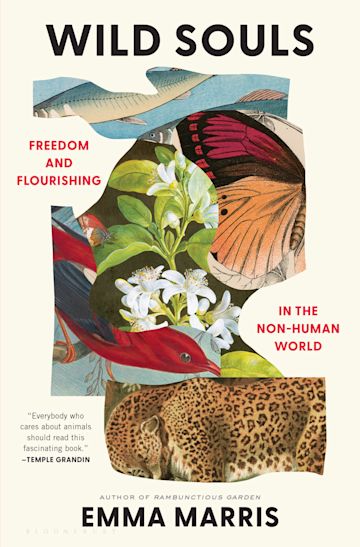Review by Bryan Windmiller, Director of Field Conservation

A tiny bluish-silver fish, the Devil’s Hole pupfish (Cyprinodon diabolis), is a poster-child for species in deep existential trouble. The world’s entire population of “pure” (we’ll get to that) Devil’s Hole pupfish has averaged fewer than 100 individuals for the past 20 years and is restricted, for the most part, to an 84 square foot limestone ledge in the shallows of a single flooded cavern (Devil’s Hole) in a disjunct portion of Death Valley National Park in Nevada. Despite years of intense conservation management work by the US Fish and Wildlife Service and collaborating conservationists, the fish living in this one cavern, filled with hot water that is low both in nutrients and oxygen, breed poorly and grow slowly. The somewhat deformed look of Devil’s Hole pupfish, it turns out, can be replicated by subjecting individuals of the closely related but more common Ash Meadows Amargosa pupfish (C. nevadensis) to long periods of time in hot water and near starvation conditions.
After the passage of the US Endangered Species Act in 1973, pupfish recovery biologists decided to create three assurance colonies of Devil’s Hole pupfish at nearby sites. Two failed but in the third one, the introduced pupfish were soon spawning, growing, and increasing in number with shocking abandon. Upon closer inspection, the biologists determined that somehow, among the translocated Devil’s Hole pupfish, there were a few (clearly amorously inclined) Amargosa pupfish. The little bit of Amargosa pupfish DNA acquired in these illicit matings allowed the newly created hybrid Devil’s Hole x Amargosa pupfish to radically boost their overall fitness well beyond that of their inbred and moribund purebred Devil’s Hole parents.
So, was that accidental creation of vigorous hybrid pupfish a good thing or a bad thing for wildlife conservation? Should conservationists be focused on helping secure the limited recovery of the somewhat hybridized Devil’s Hole pupfish, or should they instead kill these human-created chimeras and do their best to keep the inbred pure-bloods going on perpetual life support? Does it matter that recent evidence suggests that the two different parental pupfish “species” may have only diverged a few hundred years ago and are about as genetically similar as humans from Kenya and Scandinavia?
Similar ethical questions about the importance of genetic purity abound in the practice of trying to conserve and assist populations of rare species. Are so-called “pizzly bears” (hybrids of polar bears, Ursus maritimus, and grizzly bears, U. arctos horribilis), which seem to be more common as human-caused landscape and climate change induce more range overlap between the parental species, a good thing if they adapt well to the rapidly warming and increasingly vegetated southern reaches of past polar bear habitat? Or closer to home, should MassWildlife and Zoo New England be trying to maintain the “genetic integrity” of an important population of Blanding’s turtles (Emydoidea blandingii) at Great Meadows, because an initial 2012 study showed that population to be relatively genetically unique in New England? Or, should we be actively acting as turtle matchmakers and moving a few individuals back and forth between Great Meadows and larger populations to the west, populations that would likely share a good deal of gene flow if it were not for human-created barriers to turtle movement, like Route 495?

In her 2021 book, Wild Souls: Freedom and Flourishing in the Non-Human World, Emma Marris, one of the world’s most insightful and outspoken conservation writers, takes on challenging questions about the value of concepts such as genetic and ecological integrity in our efforts, as humans, to help millions of our fellow species cope with a world that our species has radically altered. To what extent do we owe assistance to species of animals and plants that are disappearing because of changes that Homo sapiens has wrought? More challengingly, what exactly is the value of a “species”, a human-created concept that can, as in the case of Devil’s Hole pupfish and “pizzly” bears (not to mention hawthorns and shadbushes) be very squishy? That question takes on great importance when balanced against the rights of individual animals (and plants, if you wish). Some Blanding’s turtle conservationists in the Midwest routinely slaughter hundreds or thousands of raccoons (Procyon lotor) to help a turtle species which is nowhere near the brink of extinction. Should we, of Zoo New England’s Field Conservation Department, be in the business of trapping and killing river otters (Lontra canadensis) because they may be limiting the recovery of rare wood turtles (Glyptemys insculpta) in Massachusetts?
In Wild Souls, Marris takes the reader on trips around the world examining complex issues from the perspectives, as she imagines them, of the wild animals themselves. Her work is informed and enhanced by a deep grounding in philosophy aided, as the author notes, by her marriage to Oregon Tech. professor Yasha Rowher, who specializes in the philosophy of science. Rather fearlessly, Marris poses questions such as: Was saving California condors (Gymogyps californianus) from extinction by taking the last birds into captivity to captive breed and later reintroduce them back to the wild worth the cost of denying liberty to those last wild condors? Is it worth shooting hundreds of native barred owls (Strix varia), as USFWS does annually, because they have been able to naturally expand their range and now threaten the existence of pure spotted owls (Strix occidentalis) through hybridization? How do we weigh the rights of individual domestic goats (Capra hircus) to flourish and not suffer needless pain against the changes that goats, introduced by humans into many oceanic islands, cause in those island ecosystems?
I was fascinated, inspired, and occasionally provoked by Marris’s examples and analyses. Emma Marris is an outspoken foe of zoos, for example, believing that captivity in zoos causes suffering among many zoo animals and that these harms outweigh any conservation value obtained in the process. I personally believe that Marris too readily discounts the importance of cross-species empathy in fostering a conservation ethic in our society and, consequently, the key role that zoos have in allowing humans and wild non-humans to get close enough to one another to inspire a bit of empathy (at least in some of the humans). Overall, however, I found that the views expressed by the author of Wild Souls gave me a fresh and rather profound perspective on many of the difficult questions that ZNE’s field conservation staff regularly struggle with.
In the end, Marris lists 10 value statements that help guide her decisions about questions such as the value of hybrid pupfish, the rights of barred owls and goats, and the times when we humans should or should not intervene in the lives of wild animals. Two of these stand out: the critical importance of placing compassion foremost in our decision making when interacting with wild animals and the need for humility, as we increasingly face societal and global decisions that will affect trillions of lives, both human and non-human while lacking the ability to really understand the consequences of most of our actions. I heartily recommend Wild Souls and indeed most anything else written by Emma Marris.
